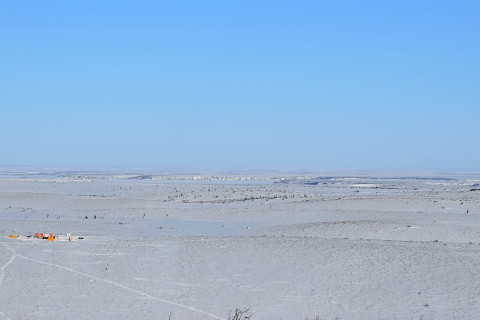Fluxes of the strong greenhouse gas nitrous oxide (N2O) from permafrost soils worldwide have been synthesized for the first time. Nitrous oxide emissions from permafrost-affected soils are more common than previously thought and will likely increase with climate change, claims an international group of researchers led by the University of Eastern Finland and University of Montreal in an invited review article published in Nature Reviews Earth and Environment.
Permafrost-affected soils, occurring in Arctic, Antarctic and Alpine regions, cover a large part of the globe and store vast amounts of carbon and nitrogen bound to organic matter, accumulated under cold conditions. However, N2O emissions from permafrost-affected soils have long been considered to be negligible due to limited availability of reactive nitrogen in these cold climates.
According to the review, N2O emissions from certain permafrost soils across the globe can be as high as the emissions from tropical and agricultural soils, known globally as important N2O sources. Intermediate soil moisture content, high N content and lack of vegetation cover are the major environmental drivers leading to high N2O fluxes. However, there are also surfaces in permafrost regions that consume atmospheric N2O, and the lack of measurements is one of the key uncertainties in determining the global relevance of N2O emissions from permafrost-affected soils.
Importantly, the review shows that climate-change related disturbances, such as warming, thawing of permafrost, wildfires, changes in vegetation, hydrology and nutrient supply, can increase N2O emissions from permafrost soils, suggesting that the role of permafrost soils for the global N2O budget will likely increase. The present N2O emissions from permafrost soils may represent up to 3.5 % of the global N2O budget, and up to 9.5 % of the N2O emissions from natural soils. These findings show that N2O, in addition to carbon dioxide (CO2) and methane (CH4), has to be considered in greenhouse gas budgets when evaluating the feedback between permafrost-affected soils and the atmosphere. Nitrous oxide is 300 times more powerful in warming our climate than CO2 and causes ozone destruction in the stratosphere.
One of the first discoveries of N2O hot spots in the Arctic was made a decade ago by researchers from the University of Eastern Finland, who visited permafrost sites in East European tundra. Based on their long-term experience on N2O emissions from boreal soils, they identified barren surfaces in permafrost peatlands as potential sources for N2O – a hypothesis that was proven true. Since then studies conducted in other permafrost regions have confirmed these findings, suggesting that N2O fluxes from permafrost regions may be more important than originally thought.
The recently published review now further underlines the importance of N2O emissions from permafrost regions and addresses current knowledge gaps, thereby substantially advancing our understanding of permafrost-climate feedbacks.
For further information please contact:
Dr. Carolina Voigt, carolina.voigt (at) umontreal.ca
Emer. Prof. Pertti Martikainen, pertti.martikainen (at) uef.fi
Dr. Maija Marushchak, maija.e.marushchak (at) jyu.fi
Adj. Prof. Christina Biasi, christina.biasi (at) uef.fi
Research article:
Voigt C, Marushchak ME, Abbott BW, Biasi C, Elberling B, Siciliano SD, Sonnentag O, Stewart KJ, Yang Y, Martikainen PJ (2020): Nitrous oxide emissions from permafrost-affected soils. Nature Reviews Earth and Environment. DOI: 10.1038/s43017-020-0063-9.
